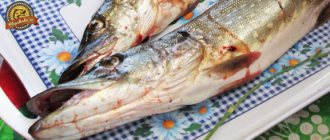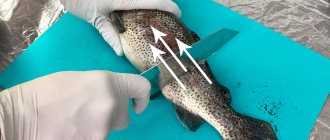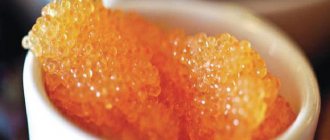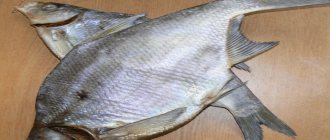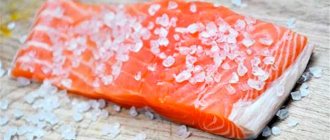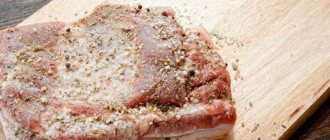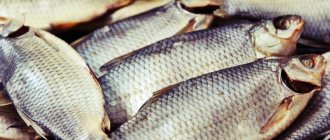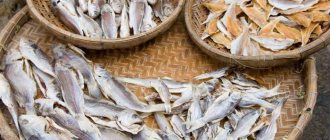The benefits of dried fish
No one dared to dispute the benefits of fish. One has only to remember that Asians live very long and rarely get sick. And seafood takes a significant place in their diet. Cooking methods may deprive fish of some of its beneficial properties. But this does not make it harmful.
Proven benefits of dried fish:
- It contains a lot of Omega-3 acids. They play a large role in destroying cells that can cause cancer. With constant consumption of seafood, the risk of getting cancer is reduced.
- It is the dried product that has a positive effect on the condition of older people, reducing the risk of Alzheimer's disease.
- Dried fish, according to nutritionists, is very useful for pregnant women. It helps get rid of depression. This means that this property also helps those who are not in a position.
- Consumption of the product reduces the risk of heart attack by more than 40%.
- Stroke can also be delayed by introducing fish into the diet. This was proven by scientists from Harvard University.
- Saturated acids affect the condition of the skin, hair, and nails.
- By consuming the product, you can reduce the number of fatty plaques.
- Dried fish helps keep your skin smooth.
Features of preparing taranka at home
At home you can make a really tasty taranka.
If you use the classic good method, you will need a minimum amount of equipment and products. These are salt, water, weight, and wire with a suitable place for drying. For storage use cool places, jars and a freezer. It is important to use enough salt, as this is the only way to rid the river dweller of bacteria. The summer drying option makes life easier. Summer means you don’t have to come up with additional ways to prepare taranka. All you need is a street. The winter option requires taking action. In the cold season, an electric dryer will help, and the question of how to dry fish at home in winter will disappear.
Important! The hot drying method is used in production at temperatures above 80 degrees.
Smoking is also practiced in production. It is difficult to smoke at home, although the product turns out more natural.
How to prepare fish for drying - selection and processing
An important stage that fish must go through is preparation. Sea and river inhabitants are taken for drying. It is advisable to choose a carcass that is not very small and not very large. Bony fish should be avoided.
Important! It needs to be cooked immediately after the catch, no later than 24 hours after it.
Which fish is suitable:
- rudd;
- bream;
- ram;
- roach;
- vobla;
- saberfish;
- Vomer;
- perch;
- zander;
- zander;
- carp;
- white bream;
- pike;
- gudgeon;
- crucian carp;
- ide;
- blue;
- carp;
- mackerel;
- capelin;
- goby;
- smelt;
- sprat;
- herring;
- tracing paper;
- samsa;
- perch;
- mullet;
- scap;
- horse mackerel;
- ruff.
Preparation includes several stages:
- Treatment.
- Pickling;
- Soaking.
How to do the processing before you start drying fish at home in the summer:
- First, the carcasses need to be selected. Weight should be up to 1 kg. It is better to select by size, since it will take different times to dry large and small carcasses.
- Next they need to be gutted. A large specimen is cut on the back, a small one on the belly. You don't have to remove the insides, but they will give off bitterness. You can leave sea fish whole, which do not eat algae, as they rot inside it. If there was no evisceration, you need to pour a saline solution into the belly with a syringe.
- It is better to cut large representatives on the back.
How to pickle taranka - salting methods
Taranka can be salted in several ways. Each one is good in its own way. The choice depends on how dry the snack should be after drying. With the wet method, it is possible to make the appetizer more spicy and prepare a fragrant salty brine. When dry salting, spices are added to the salt.
Wet
The wet salting method is suitable for carcasses of 0.5 kg. It is desirable that they are no larger in size. All you need is water, fish, salt. This type of salting is used more often.
Wet salting process:
- For every liter of water, take 150 grams of salt. The concentration can be checked using a raw egg, which should float. This solution is called brine.
- The fish is placed in the container. Pour in the solution. But she might come up. To do this, install a grate and then cover it with a load. And the carcasses are constantly immersed and evenly salted. This will also help remove the fishy smell in the room.
- The container is placed in a cold place, which prevents the fish from spoiling. Salting time is 3-4 days. The larger the carcass, the more time it will take.
- After time, the carcasses are washed with fresh water to remove excess saltiness. The carcasses have already taken everything that is needed. Soak small fish for 30 minutes. And a large one - an hour or even two.
Dry and wet salting in most cases occurs without adding spices. But they will never hurt the fish. The main thing is to choose the right spices.
What is suitable for ramming:
- allspice;
- Bay leaf;
- nutmeg;
- black pepper;
- coriander;
- carnation;
- ginger;
- cinnamon;
- red capsicum;
- mustard seeds;
- dill;
- caraway;
- anise;
- sugar.
Important! You need to add 50% sugar to the spicy brine.
Dry
When dry salting, it is advisable to cut the carcasses. Otherwise, the salt will have to be thoroughly rubbed into the gills and small cuts on the back and belly. It’s worth finding a suitable container in advance. For example, it could be an enamel basin.
How to pickle:
- First you need to pour a layer of salt, about 10 millimeters, into the container.
- Rub the fish with salt. Pay attention to the gills and mouth. If you make several cuts, there will be a more even distribution of salt.
- Place the fish on the first layer. Sprinkle it with salt another centimeter. It is advisable that there is no void between the carcasses.
- Cover the carcasses with cardboard or another lid.
- Place a load of at least 7 kg.
- Place the basin in a cool place.
- The salting period depends on the quantity and size of the fish. One carcass of 150 g requires two days. In general, you can wait a week.
- When the time is up, the fish should be washed. To do this, you will first need fresh water. Then you can apply vinegar. For 10 liters of water you will need only 50 ml. This will kill bacteria and get rid of annoying insects.
- Then you can hang it up.
Important! The optimal option is soaking in fresh water, for as many hours as the number of days the fish lay under salt.
Salting. Method No. 1
The ram is salted in two ways: dry and wet, that is, in a saline solution (brine). Boxes or buckets made of plastic, stainless steel, or enamel-coated metal are used as containers for pickling. Taranka can even be salted in a plastic bucket:
- The first layer in the bucket is salt, then fish, again salt and again fish. Make as many layers as the container allows.
- Place a flat piece of wood and a weight - a stone or brick - on the top layer.
- Keep the fish in salt for 3 to 5 days depending on its size, the larger the longer.
- After salting, soak in running water. (They soak it for several hours, often for the same number of days as it was salted).
- Hang on hooks and hang on the balcony or outdoors, but only in a shaded place.
How to hang and dry fish correctly?
The drying process becomes a source of controversy.
By the head or by the tail? In fact, carcasses can be hung in different ways. It is worth considering all the methods and deciding exactly how to dry fish in a dryer or without it. How to properly dry fish at home by hanging it on its tail:
- Make a hole in the flesh of the tail.
- Thread the hook.
- In this position, moisture will flow out through the mouth. The meat will not be bitter, the carcass will dry evenly.
Drying by hanging by the head:
- Pass the wire through the eyes. Hang them away from each other.
- In this position, the fat will not leave the fish, it will be juicier, but drying will take a little longer.
- However, there will be bitterness, which beer lovers are not afraid of.
Carcasses should be hung on a thin rope made of natural materials or wire that does not rust. The future snack is left in a draft in the shade. Sometimes you can leave it in the sun for a few hours to dry it out. The temperature for drying should not be higher than 20 degrees.
How to dry ram correctly
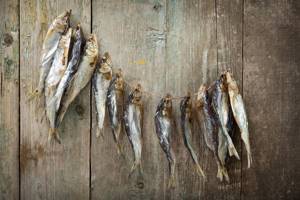
Make a double thread and string the fish on it at a distance of at least 7 cm from each other, passing it through the eyes so that the valuable fat and brine do not flow out through the mouth, but remain inside. Some fishermen dry the ram on hooks, and place the small fish on a wooden surface and turn it over as it dries. This kind of ram turns out to be especially tasty, tender and rich. Fish “garlands” should be hung in a well-ventilated place, but in the shade - in the attic or on the balcony, making sure there are no insects. By the way, soaking in vinegar water is a reliable preventive measure against flies, because the smell of vinegar repels them. If flies land on your fish, it is best to discard it immediately as they may lay eggs on it. For more reliable protection against insects, it is better to put together a special box for drying fish and cover it with a fine mesh.
Many people dry fish in Isidri dryers - in this case, you need to slightly open the ram's gills (if they have not been removed), trim the belly and secure it in the open form with toothpicks.
After 3 days, the fish can be considered dried. If you want dried ram, wait 2 weeks. Properly dried ram is neither soft nor hard, has a pleasant taste and smell, has a reddish-amber hue without yellow spots, and glows slightly in the light. Fish salted wet becomes more juicy after drying, while salting without water produces drier fish.
How long does it take to dry the battering ram?
It’s difficult to say how long to dry fish.
There are no exact drying times. Many factors influence readiness. These are humidity, temperature, carcass size. So the small fish will be ready after a couple of days. And large carcasses will dry for a couple of weeks or even a month. It is important not to overdry! You should not dry it until it becomes completely thin. What does the finished fish look like:
- Fully cooked meat is translucent. This can be seen if the fish was cut up.
- The carcass is dense and elastic. There is a greasy sheen.
- The scales are not covered with salt crystals. The skin is removed, but it is durable.
- The aroma is pleasant and spicy.
Advice! When drying fish, you need to monitor its condition every other day.
How to store dried fish at home correctly
Storing dried fish is not as difficult as dry fish. There is less risk that it will dry out. While the dried product will become rancid and moldy over time. Bacteria that are dangerous to human health may appear. In any case, it will not work to store fish at home for a very long time, but with some tricks you can increase the shelf life.
Methods for long-term storage at home:
- The product should only be left in a cool place. This doesn’t have to be a refrigerator; you can choose a balcony if it’s winter outside. The carcasses are hidden in paper. If they are large, wrap each one separately. If the fish are small, you can save paper. Each bundle is hung in a place where the sun does not reach. It is important to maintain humidity within 70-80%. This will prevent it from getting moldy and drying out. And the fat will not become bitter.
- For long-term storage, a freezer is suitable. The carcasses will also have to be wrapped in baking paper. In this way, you can keep fish safe for up to six months, or even a year.
- If you can’t occupy the freezer, you can use jars. They can be glass or metal. They put fish in them, put a candle there and set it on fire. The jar is closed. This secret will help avoid drying out. The fish is placed in a place where there is no sunlight.
Important! The most unsuitable storage option is a plastic bag. This error leads to the appearance of mold on the carcasses.
How to store the battering ram?
- If you made the battering ram correctly, you can store it for no more than 150 days. To increase shelf life, you can roll the fish into sterilized jars and store the product in a cool room.
- But it's best to wrap it in parchment paper and place it in a wicker basket.
- If the fish is dried , then it should be wrapped in foil and stored in a cool place. The shelf life of dried taranka is no more than 1.5 months.
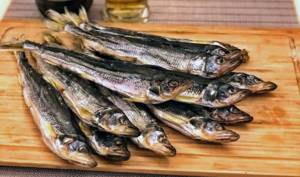
Optimal conditions for storing the battering ram:
- Air humidity – 75-80%.
- Temperature – from +3°С to +8°С.
If the humidity is too high, the fish will become moldy. At low humidity it will dry out.
Useful tips
Even an experienced fisherman could use some advice sometimes. With the world on a string - and the perfect fish for beer is ready!
Useful tips to help you learn how to make a battering ram at home:
- You can inject a saline solution into the fish with a syringe immediately after catching it if you do not plan to gut it before cooking.
- Coarse salt will reduce the time it takes to salt.
- When wet salting, you should add sugar, it will make the fish more tender.
- If the fish is very dry, you can moisten it with a wet brush and wrap it in parchment.
- If the fly lands on the fish, you need to use tulle. This simple advice will eliminate the question of how to dry fish in the summer without flies.
- You can add bay leaves and onions to a tasty brine for the wet salting method, boil it a little, then pour in the carcasses. Vinegar, milk, and sunflower oil are also added there.
- After the fish is taken out of the brine, you can grease it well with vegetable oil and drop a little into the gills and mouth.
- To preserve the fish, you need to stuff nettles into its belly before adding salt; this recipe is most relevant in the summer.
- After salting, you can put pine branches in the belly.
- If it's raining outside, an oven or a special dryer will help. Do not leave fish in high humidity.
- To make the scales easy to clean, place the carcasses in ice water for a few minutes to make cooking easier.
- You need to freeze the ram in such a way that you can get one fish without bringing another out into the heat. Each frozen package should be kept separately.
Taranka is a popular snack for beer. It is especially pleasant to eat fish made by yourself. There are many recipes for drying and pickling. But the most correct way is to make do with salt and water, although the smoked product is more suitable for beer. Difficulties arise in determining the period of salting, soaking and drying. But you will have to monitor the condition and readiness of river or sea fish yourself. The main thing is to create conditions suitable for this.
Fishing methods
It is not difficult to catch a ram, so both single fishermen and specialized vessels are involved in the catch.
There are two main harvesting seasons: spring and autumn.
Existing rules set a limit on the size of the mined ram - its length should not exceed 14 centimeters. Fishing during the spawning season is always prohibited.
In the spring, it is worth waiting for the fish to return home from spawning. This is the most fertile time, because after serious efforts the ram devours everything and swallows the bait without fear.
In the fall, for prey, you need to go into deeper dams and take advantage of the lack of food in the natural environment. Fishing will be effective in river mouths, where flocks migrate to fatten up before winter.
You can catch a ram even in frosty weather from under the ice; the fish does not hibernate and rises from its den every day in search of food.
The bait can be varied at any time, even bread crumb, but it is best to put worms, maggots, bloodworms or crayfish meat on the hook, tinted with bright pink or red dough, or a semolina mixture. Due to family relationships, when deciding what to catch ram with, you can safely use roach bait.
The choice of gear is also up to the fisherman. Suitable accessories:
- fly rod with float;
- ice fishing device;
- feeder.

In the high season, such voracious fish as ram are caught using the simplest gear and feeding. But most often fishing is done with a fly rod. An important condition: sufficient depth. In shallow water a long cast will be required. Fishing rods can be Bolognese, bottom, match, and pickers are also used.
The subtleties of choosing a float - it should have a small carrying capacity, no heavier than four grams. The load for the picker can be taken one and a half times heavier. Sometimes a sliding float is used, but this is if the depth at the fishing site is no more than the length of the fishing rod.
The social nature of the fish pleases anglers. If one fish starts to bite, the prey will soon go to neighboring gear. Therefore, one device is often equipped with several small hooks. You just need to be sure that the bottom is not covered with snags or braided with grass.
In winter, special roach are caught using regular seasonal gear with a classic or moving to the side and balancing on a sensitive fastening nod. Mormyshki are used in silver or other light metallic shade. In use are “pellets” and “Uralkas”, “goats” and “nail balls”.
